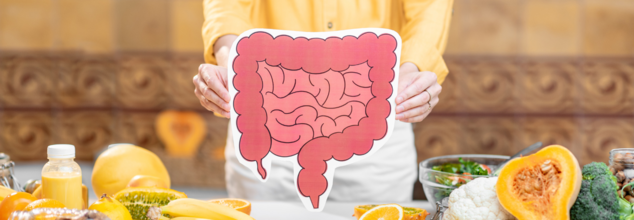- Health Conditions A-Z
- Health & Wellness
- Nutrition
- Fitness
- Health News
- Ayurveda
- Videos
- Medicine A-Z
- Parenting
- Web Stories
Ayurveda For Dry Skin: The Secret To A Nourishing Dry Skin With All Things Natural

Credits: Canva
The changing weather’s crisp air can leave skin feeling dry, tight, and vulnerable. According to Ayurveda, cold seasons intensify the dry qualities of Vata dosha, leading to dehydration, flakiness, and premature aging. Without proper care, this imbalance can weaken the skin’s natural barrier, making it more prone to irritation and dullness.
Ayurveda, the ancient Indian system of medicine, offers holistic solutions to combat dry skin by focusing on internal nourishment and external hydration. By incorporating specific dietary choices, self-massage rituals, and hydrating oils, you can restore skin balance and maintain a healthy glow throughout the year.
Ayurvedic Diet for Deep Nourishment
What you eat directly affects your skin’s hydration and overall health. In Ayurveda, consuming warm, nourishing foods helps balance Vata and replenish moisture from within. Here are some dietary recommendations:
Soups and Stews: These nutrient-rich, hydrating meals are easy to digest and help provide deep nourishment.
Healthy Fats: Ghee, olive oil, and coconut oil strengthen the skin’s lipid barrier, preventing moisture loss.
Steamed Vegetables: Soft, warm vegetables like carrots, squash, and sweet potatoes offer essential vitamins for skin repair and hydration.
Herbal Teas: Infusions of ginger, cinnamon, and licorice improve digestion and circulation, which are crucial for healthy skin.
Additionally, staying hydrated is key. The cold season may suppress thirst, but drinking warm water throughout the day keeps skin plump and resilient.
The Magic of Abhyanga: Daily Self-Massage for Hydration
A daily self-massage, known as Abhyanga, is a powerful Ayurvedic ritual for keeping skin deeply moisturized. This practice involves massaging the skin with warm oil to lock in hydration and improve overall skin health.
Benefits of Abhyanga include:
Deep Moisturization: Warm oil penetrates the skin, preventing dryness and rough patches.
Improved Circulation: Gentle massage enhances blood flow, ensuring better oxygenation and nutrient absorption.
Stress Reduction: The rhythmic motion of self-massage calms the nervous system, reducing stress-related skin issues.
To practice Abhyanga, warm the oil slightly before application, massage it into the skin using gentle circular motions, and allow it to absorb for at least 15-20 minutes before rinsing off.
Choosing the Right Oil for Your Skin Type
Selecting the right oil is crucial in Ayurvedic skincare. Different oils offer unique benefits for maintaining soft, hydrated skin. Here are some top choices:
Sesame Oil: A warming, deeply nourishing oil that combats winter dryness.
Coconut Oil: Provides intense hydration and antimicrobial properties, making it ideal for dry, sensitive skin.
Almond Oil: A lightweight yet deeply moisturizing option, suitable for daily use.
Additional Ayurvedic Tips for Healthy Skin
Use a Gentle Cleanser: Harsh soaps strip the skin of its natural oils. Opt for mild, herbal-based cleansers.
Apply a Natural Moisturizer: Aloe vera gel or honey helps lock in moisture and soothe irritation.
Practice Pranayama (Breathwork): Deep breathing techniques improve circulation and detoxify the skin.
Get Adequate Sleep: Quality rest helps the body repair and rejuvenate the skin overnight.
Ayurveda offers a holistic and time-tested approach to combat dry skin. By following an Ayurvedic diet, embracing the ritual of Abhyanga, and choosing the right oils, you can achieve long-lasting hydration and maintain healthy, glowing skin. Integrating these simple yet powerful practices into your daily routine can transform your skin from dry and flaky to soft and nourished.
Note: This article is for informational purposes only and is not a substitute for professional medical advice. Always consult your doctor before making any major changes to your skincare routine.
Seasonal Sickness And Changing Weather: Ayurvedic Remedies For Cold, Cough And Sore Throat

(Credit-Canva)
Ayurveda is one of the world's oldest medical systems. Its origins go back over 3,000 years, found in ancient Indian writings called the Vedas. Today, it's still widely used as an alternative medicine. Ayurveda looks at health in a complete way, believing our bodies are made of five elements: air, space, fire, water, and earth. These elements form three parts called "doshas." When these doshas are out of balance, that's when illness is thought to happen.
While there isn't much scientific proof that Ayurveda directly cures common sicknesses like colds and flu, some of its herbal remedies might help you feel better and manage symptoms.
Ayurvedic Remedies to Know During Seasonal Change
For a Dry Cough (No Mucus)
In Ayurveda, tulsi is often called the "queen of herbs." It's a popular choice for dry coughs. Some small studies suggest tulsi might help loosen phlegm and improve coughs caused by allergies, asthma, or lung problems. One older study even showed it might help asthma patients breathe better. Tulsi is generally safe and might also help keep your blood sugar, blood pressure, and cholesterol levels healthy.
For a Wet Cough (with Phlegm)
Ginger is a very common herb in Ayurveda. It has properties that can fight off bad stuff in your body and reduce swelling. Early studies on human throat cells suggest that parts of ginger might relax your throat muscles, which could ease coughing. More research is needed to be sure if ginger helps with cold or flu coughs.
For Cough and Sore Throat
Licorice Root is a herb that contains things that can help reduce swelling and pain. Studies have shown that licorice applied directly can help with sore throats after surgery. One study found that gargling with licorice extract greatly reduced sore throats after an operation. While we need more studies for sore throats from colds or flu, it looks promising.
For Cough and Fever
Sudarshana Powder is a traditional Ayurvedic powder is often used to treat fevers. It's a bitter mix of 53 different herbs. It might help with fever that comes with not wanting to eat, feeling tired, sick to your stomach, or having an upset stomach. But more research is needed to know how well it truly works.
For General Cough and Cold
Garlic is believed to have properties that fight germs and viruses, which might help you avoid getting a cold. One small study found that people who took an active ingredient in garlic (allicin) had fewer colds. However, more research is needed to be certain about garlic's benefits for colds.
Other Helpful Home Remedies for Cough and Cold
Here are some other common home remedies that can help with cough and cold symptoms:
Honey Tea: Mix about 2 teaspoons of honey with warm water or tea.
Saltwater Gargle: Mix 1/4 to 1/2 teaspoon of salt in 8 ounces of warm water and gargle. This helps loosen mucus in your throat.
Steam: Breathing in steam can help clear mucus from your lungs. You can do this by filling a bowl with hot water and leaning over it (carefully!) or by taking a warm bath or shower.
Bromelain: This is an enzyme found in pineapple. Eating pineapple or taking a bromelain supplement might help break up mucus in your throat.
Peppermint: Peppermint can soothe your throat and help break down mucus. You can drink peppermint tea or add peppermint oil to a steamy bath.
Ayurvedic Based Skin Care Tips To Rejuvenate Your Skin Health

(Credit-Canva)
Skin care has become all the rage recently. There are many products and skin care routine tutorials that can help you find what products you should use and how you can go about building your own skin care routine. However, an issue you may face with these products and routines is how expensive and inaccessible they are. There are products that may not be available to you or may be way beyond your budget. If this is an issue for you, you can try ayurvedic remedies.
Ayurvedic skincare is a beauty approach rooted in ancient Indian medicine. It involves special Ayurvedic facials, treatments for various skin problems, and natural herbal products for your skin. While there are many Ayurvedic skincare products available today, it's important to know their quality and ingredients to get the best results. Ayurvedic home remedies for skin care are also popular and are thought to work best for specific skin types and needs.
However, before you go ahead and try ayurvedic recipes, one must know what kind of skin type they have, this will help you identify what kind of skincare you need.
Skincare for Each Dosha
Vata Skin (Dry & Rough)
If you have a dominant Vata dosha, your skin tends to be dry and rough and can wrinkle easily if not kept moisturized. According to ayurveda, Vata skin has less fat and needs more moisturizing, both from the outside (creams) and inside (food). She suggests using oil-based moisturizers and eating warming spices like ginger. The herb ashwagandha can also help reduce dryness when used in a face mask.
Pitta Skin (Oily & Prone to Breakouts)
People with high Pitta often have oily skin that might be prone to acne and redness (rosacea). Experts advise using cooling ingredients like aloe vera, turmeric (which helps with swelling), and sandalwood (which reduces pimples and redness) for this skin type.
Kapha Skin (Cold, Oily & Congested)
Kapha skin is typically cold and oily, and it might be prone to pimples, whiteheads, and puffiness. Experts recommend dry brushing to clear blockages, boost circulation, and exfoliate. They also suggests avoiding oil-based creams and using face masks regularly.
Easy Homemade Face Mask Recipes
Many Indian homes already have the ingredients for traditional face masks in the kitchen. Chickpea flour is a common base. You can mix it with a pinch of turmeric and milk, lime juice, or rose water to make a classic paste. Remember, Ayurveda teaches that different skin types need different care. If you're unsure about any ingredients in a DIY mask, it's always best to ask a medical professional.
Vata Face Mask (for dry skin)
Mix 1 tablespoon chickpea flour, a pinch of turmeric, and 1/4 cup rose water, yogurt, or cold milk to form a paste. Apply for 10-15 minutes (or until almost dry), then wash with lukewarm water and apply an oil-based moisturizer like sesame oil.
Pitta Face Mask (for oily, irritated skin)
Dab rose water on your skin to cleanse. Then apply 1/4 cup pure aloe vera gel for 10-15 minutes. Wash with lukewarm water and use a gentle moisturizer (like one with geranium oil). Repeat 2-3 times a week.
Kapha Face Mask (for oily, congested skin)
Mix 1 teaspoon honey with a pinch of turmeric. Apply for 10 minutes and wash with lukewarm water. Or mix Multani mitti (fuller’s earth) with water to make a paste. Apply for 10-15 minutes and wash with lukewarm water.
Face Mask for All Skin Types
Mix 2 tablespoons fine oat flour, 2 teaspoons almond flour, a pinch of turmeric, and 2-5 drops of an oil of your choice. Apply a thick layer for 15 minutes, then wash with lukewarm water. This paste can also be used for your whole body.
Gut Health Acting Up? Ayurvedic Remedies For Immediate Relief

(Credit-Canva)
Ayurveda is known as a way of living, adapted by the nature surrounding us. Many of us are not even aware of how many ayurvedic remedies we consume daily and how it helps our health. There are you will find in ayurvedic texts about lifestyle habits like how to sleep, eating cleanliness as well as when and how to exercise, all as a part of healthy ayurvedic living.
What you eat can either strengthen you internally, boost your digestive system and overall well-being, or it can smother it. Harmful foods like fried items, processed meats, and very cold foods can create undigested residue, known as "ama" (toxins), which Ayurveda considers the root cause of disease.
Ayurvedic Remedies For Digestive Issues
We have all had days when we wish to indulge in junk food, and most of the time they do not cause many problems. However, sometimes these indulgent moments can end up causing you digestive issues and causing a lot of discomfort. To tackle these, one can try these readily available ayurvedic remedies.
Ghee, Salt, and Warm Water Remedy
For occasional constipation, a simple drink of ghee, salt, and hot water can help. Ghee lubricates the intestines, while salt aids in cleansing. Another suggestion is eating a ripe banana two hours after dinner, followed by a glass of hot milk or water. A tablespoon of castor oil before bed may also provide relief; however, always consult a healthcare provider before using it, especially if pregnant or for children/elderly individuals.
Warm Water, Fennel, and Ginger
To ease bloating, using warm water with various additions is highly recommended. Combining warm water with fennel seeds or a mixture of ginger and honey can be very effective. Simply chewing on fennel seeds after meals also aids digestion and reduces gas. If you prefer teas, opting for mint or fennel tea can provide soothing relief from bloating and discomfort.
Natural Spices and Homemade Drinks
To counter acid reflux, chewing on fennel seeds, holy basil leaves, or a clove can stimulate saliva production, which helps balance stomach acidity. Freshly made drinks are also beneficial, such as coconut water with tender coconut bits or homemade buttermilk (takra), made by churning water and plain yogurt together. Buttermilk is believed to soothe the stomach and reduce irritation in the stomach lining.
Gourds and Consistent Hydration
For diarrhea, easily digestible foods like bottle gourd (cabalash), prepared as soup, curry, or stew with rice, are excellent. This vegetable is rich in fiber and water, making it gentle on the stomach. Crucially, staying well-hydrated is vital; drink more fluids than usual. Plain water is best, but buttermilk, apple/pomegranate juice, or ginger tea can also help rehydrate and replenish lost nutrients while gently stimulating digestion.
Cooked Vegetables and Soothing Soupy Dishes
If you're suffering from indigestion, review your recent diet and seek a "counterbalance." Avoid dairy, large grains like rice, raw vegetables, and anything hard to digest. Instead, opt for steamed or stir-fried cooked vegetables with digestion-aiding spices such as ginger, cinnamon, and black pepper. Soupy and liquid-like dishes are also very helpful meals. Additionally, juices like equal parts onion juice and honey, or buttermilk with garlic paste, can offer relief.
© 2024 Bennett, Coleman & Company Limited

